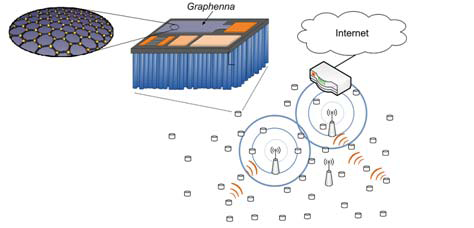Conferència: Nanoantenes de grafè
Conferència inaugural del quadrimestre de primavera del curs 2013-14
- https://enginyeriafisica.etsetb.upc.edu/ca/esdeveniments/conferencia-nanoantenes-de-grafe
- Conferència: Nanoantenes de grafè
- 2014-02-03T11:00:00+01:00
- 2014-02-03T12:30:00+01:00
- Conferència inaugural del quadrimestre de primavera del curs 2013-14
03/02/2014 de 11:00 a 12:30 (Europe/Madrid / UTC100)
Sala d'Actes de l'edifici Vèrtex B3 del Campus Nord de la UPC
El dilluns 3 de febrer de 2014 a les 11:00, el professor Eduard Alarcon del departament d'Enginyeria Electrònica (EEL) i del Nanonetworking Center (N3Cat), adjunt a l'ETSETB per a les activitats universitàries a Amèrica del Nord, farà la conferència inaugural del quadrimestre de primavera del grau en enginyeria física titulada "Nanoantenes de grafè", a la Sala d'Actes de l'edifici Vèrtex del Campus Nord de la UPC.
Cilqueu aquí per veure les diapositives de la conferència
Abstract
Current trends in microprocessor architecture design are leading towards a dramatic increase of core-level parallelization, wherein a given number of independent processors or cores are interconnected. Since the main bottleneck is foreseen to migrate from computation to communication, efficient and scalable means of inter-core communication are crucial for guaranteeing steady performance improvements in many-core processors. As the number of cores grows, it remains unclear whether initial proposals, such as the Network-on-Chip (NoC) paradigm, will meet the stringent requirements of this scenario.

In this talk, we will discuss a new research area where massive multicore architectures have wireless communication capabilities at the core level. This goal is feasible by using graphene-based plasmonic antennas, or shortly named graphennas, which can radiate signals at the Terahertz band while utilizing lower chip area than its metallic counterparts (to the point of being size-compatible with current and future processing cores). These unique properties are mainly due to the subwavelength plasmonic effects present in the surface of a graphene patch. The resulting Graphene-enabled Wireless Networks-on-Chip (GWNoC) are expected to allow multi-cast multi-receiver communication capabilities, therefore significantly reducing many of the issues present in massively multicore environments, such as data coherency, consistency, synchronization and communication problems.
Comparteix: